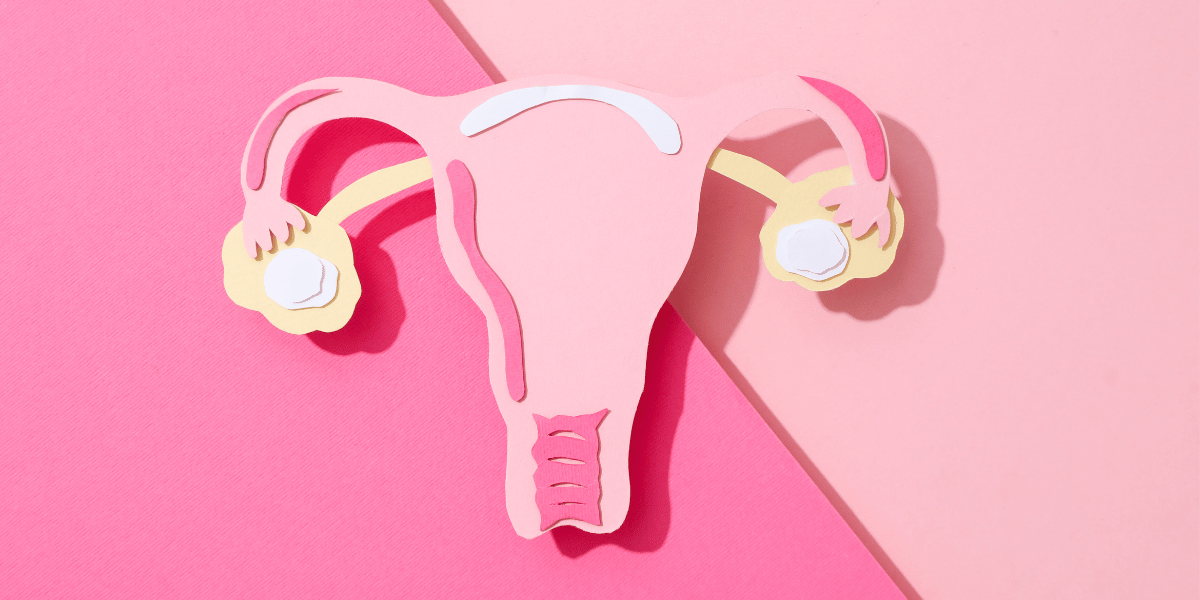What is Lymphatic Drainage?
In the pursuit of optimal well-being, people are increasingly turning to holistic approaches that go beyond conventional medicine. One such method...
.png?width=70&height=70&name=Stark_LogoMark%20(1).png)
When it comes to hormone optimization, the process can be significantly more complex for females compared to males. But why exactly is this the case?
Explore the intricacies of female hormone optimization by taking a closer look at the basics of hormonal imbalance and the specific challenges women face in achieving hormonal balance. By the end, you'll understand why hormone optimization for females is an ongoing challenge that requires careful attention and expert guidance.
Hormone optimization involves fine tuning hormone levels to achieve a balanced state, promoting overall health and well-being. Hormones regulate various bodily functions, including metabolism, mood, and reproductive health. Maintaining optimal hormone levels is crucial for both men and women, but the complexities differ significantly between the sexes.
For women, hormone optimization can be a more intricate process due to the fluctuating nature of female hormones. These fluctuations can impact everything from menstrual cycles to mood swings, making it essential to understand the unique challenges women face in this area.
In this blog, we will break down the complexities of female hormone optimization, providing valuable insights and practical tips to help you better understand this critical aspect of women's health.
Hormonal imbalance occurs when there is too much or too little of a hormone in the bloodstream. Hormones, produced by various glands in the endocrine system, are essential for regulating many bodily functions. When these hormones are out of balance, it can lead to a range of health issues.
Common symptoms of hormonal imbalance include fatigue, weight gain, and mood swings. For women, additional symptoms might include irregular menstrual cycles, hot flashes, and fertility issues. Understanding these symptoms is the first step in identifying and addressing hormonal imbalances.
The causes of hormonal imbalance can vary widely, from lifestyle factors like diet and stress to underlying medical conditions, and plenty in between. Recognizing these causes is crucial in developing an effective approach to hormone optimization.
While both men and women can experience hormonal imbalances, the process of optimizing hormones differs significantly between the genders. This is primarily due to the more complex hormonal landscape in women.
Men typically have more stable hormone levels, with testosterone being the primary hormone that requires monitoring and optimization. In contrast, women have multiple hormones that fluctuate throughout the menstrual cycle, including estrogen, progesterone, and testosterone.
These fluctuations mean that hormone optimization for women is not a one-size-fits-all approach. It requires a more nuanced understanding of how different hormones interact and affect overall health. Without even adding pregnancy or menopause into the mix, this complexity is one of the reasons why optimizing female hormones can be more challenging than optimizing male hormones.
Several factors can contribute to hormonal imbalance in females, ranging from lifestyle choices to genetic predispositions. Understanding these factors is essential for developing effective strategies for hormone optimization.
Diet, exercise, and stress levels can all impact hormone balance. A diet high in processed foods and sugars can disrupt hormone levels, while regular exercise and stress management techniques can help maintain balance. Additionally, inadequate sleep and exposure to environmental toxins can also contribute to hormonal imbalances.
Different life stages, such as puberty, pregnancy, and menopause, bring about significant hormonal changes. These life stages require tailored approaches to hormone optimization. For example, hormone levels during menopause can fluctuate dramatically, requiring specific interventions to maintain balance.
Certain medical conditions, such as polycystic ovary syndrome (PCOS) and thyroid disorders, can also affect hormone levels. These conditions often require medical intervention and ongoing monitoring to manage hormone balance effectively.
By understanding these factors, women can take proactive steps to optimize their hormone levels and improve their overall health.
The complexities of female hormone optimization extend beyond just understanding the different hormones involved. It requires a comprehensive approach that takes into account various factors and their interactions.
Unlike men, who generally have more stable hormone levels, women experience monthly fluctuations due to their menstrual cycles. These fluctuations can make it challenging to maintain a constant state of hormonal balance. For example, estrogen levels rise and fall throughout the month, impacting mood, energy levels, and overall well-being.
Many women use hormonal birth control, which can add another layer of complexity to hormone optimization. Birth control methods like pills, patches, and intrauterine devices (IUDs) can alter natural hormone levels, making it essential to consider these factors when developing a hormone optimization plan.
Every woman's hormonal landscape is unique, influenced by genetics, lifestyle, and other individual factors. This variability means that a personalized approach is often necessary for effective hormone optimization. What works for one woman may not work for another, highlighting the need for tailored solutions.
Optimizing female hormones is a complex and ongoing challenge that requires a comprehensive and personalized approach. By understanding the unique factors that contribute to hormonal imbalances and the complexities involved in hormone optimization, women can take proactive steps to achieve balance and improve their overall health.
To support women on this journey, we invite you to join our upcoming webinar, where our expert doctors will answer your questions about women's hormones and provide valuable insights into effective hormone optimization strategies. Sign up for the webinar today and be sure to let us know what specific questions you have regarding women's hormone health:

In the pursuit of optimal well-being, people are increasingly turning to holistic approaches that go beyond conventional medicine. One such method...

Have you heard of PFAs? They might sound like a complex acronym from the tech industry, but they stand for something far more troubling — Per- and...

The trending Netflix documentary 'You Are What You Eat: A Twin Experiment' has stirred not only curiosity but a storm of opinions across dinner...
